Connect With Us
Blog
Items filtered by date: October 2023
An Overview of Toenail Fungus
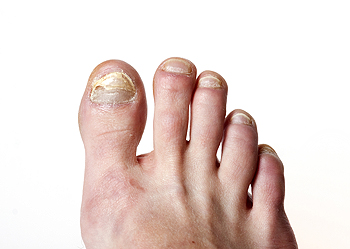
Toenail fungus, or onychomycosis, is a common but often underestimated condition that can affect individuals of all ages. It typically starts with a minor discoloration or a small white spot beneath the nail. As it progresses, the nail may become discolored, thickened, and brittle. In some cases, it can lead to pain and a foul odor. Toenail fungus is caused by various types of fungi that thrive in warm, damp environments, such as the insides of shoes. Factors like poor foot hygiene, compromised immune systems, and preexisting nail or skin conditions can increase susceptibility. Untreated toenail fungus can be aesthetically unpleasant and, in some cases, lead to complications. Early intervention is essential to prevent the condition from worsening. Understanding the basics of toenail fungus is the first step toward recognizing, treating, and preventing this ailment. If you have developed toenail fungus, it is strongly suggested that you are under the care of a podiatrist who can properly diagnose this condition, and offer treatment solutions that are right for you.
For more information about treatment, contact Philip K. Schrumpf, DPM of Active Feet Clinic. Our doctor can provide the care you need to keep you pain-free and on your feet.
Toenail Fungus Treatment
Toenail fungus is a condition that affects many people and can be especially hard to get rid of. Fortunately, there are several methods to go about treating and avoiding it.
Antifungals & Deterrence
Oral antifungal medicine has been shown to be effective in many cases. It is important to consult with a podiatrist to determine the proper regiment for you, or potentially explore other options.
Applying foot powder on the feet and shoes helps keep the feet free of moisture and sweat.
Sandals or open toed shoes – Wearing these will allow air movement and help keep feet dry. They also expose your feet to light, which fungus cannot tolerate. Socks with moisture wicking material also help as well.
If you have any questions please feel free to contact our office located in Missoula, MT . We offer the newest diagnostic tools and technology to treat your foot and ankle needs.
Risk Factors and Symptoms of Hammertoe
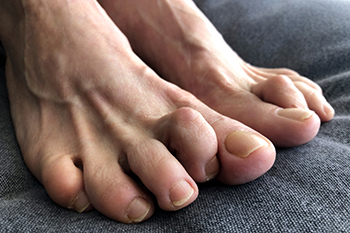
Hammertoe is a common foot deformity that affects the alignment of toes, causing them to bend or curl downward instead of pointing forward. This condition can occur in any toe but is most often observed in the second or third toe. While some individuals may have hammertoe from birth, it frequently develops over time due to factors like arthritis or wearing poorly fitting shoes, particularly those with tight, pointed toes. The most noticeable sign of hammertoe is an abnormal bending or curling of the toe. This deformity often leads to discomfort, especially when wearing shoes or walking. The persistent pressure on the bent toe can result in the formation of corns and calluses. A hammertoe may also restrict flexibility in the affected toe, which can impede normal movement. Several factors increase the likelihood of developing hammertoe. A family history of the condition can elevate your risk. The persistent use of tight or pointy-toed shoes is a common risk factor, as these footwear choices can force your toes into an abnormal position. Wearing improperly fitting shoes over an extended period can lead to hammertoe formation. For help in dealing with a hammertoe, it is suggested that you make an appointment with a podiatrist for an exam and treatment options.
Hammertoe
Hammertoes can be a painful condition to live with. For more information, contact Philip K. Schrumpf, DPM from Active Feet Clinic. Our doctor will answer any of your foot- and ankle-related questions.
Hammertoe is a foot deformity that affects the joints of the second, third, fourth, or fifth toes of your feet. It is a painful foot condition in which these toes curl and arch up, which can often lead to pain when wearing footwear.
Symptoms
- Pain in the affected toes
- Development of corns or calluses due to friction
- Inflammation
- Redness
- Contracture of the toes
Causes
Genetics – People who are genetically predisposed to hammertoe are often more susceptible
Arthritis – Because arthritis affects the joints in your toes, further deformities stemming from arthritis can occur
Trauma – Direct trauma to the toes could potentially lead to hammertoe
Ill-fitting shoes – Undue pressure on the front of the toes from ill-fitting shoes can potentially lead to the development of hammertoe
Treatment
Orthotics – Custom made inserts can be used to help relieve pressure placed on the toes and therefore relieve some of the pain associated with it
Medications – Oral medications such as anti-inflammatories or NSAIDs could be used to treat the pain and inflammation hammertoes causes. Injections of corticosteroids are also sometimes used
Surgery – In more severe cases where the hammertoes have become more rigid, foot surgery is a potential option
If you have any questions please contact our office located in Missoula, MT . We offer the newest diagnostic and treatment technologies for all your foot and ankle needs.
Foot Care Tips for Elderly People
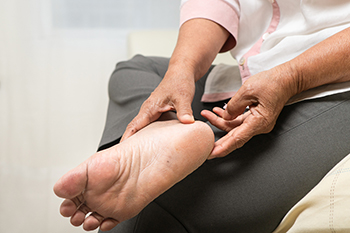
As you age, your feet undergo changes that require extra care and attention. To maintain healthy feet in your senior years, effective strategies can be implemented. Regularly inspecting your feet for cuts, sores, or signs of infection, and promptly addressing any issues helps to prevent complications. Keep your feet clean and dry to prevent fungal infections, especially between the toes. Moisturize your skin, and avoid applying lotion between the toes, as excessive moisture can lead to fungal growth. Trim your toenails carefully to prevent ingrown nails or infections. Choose footwear that is comfortable and supportive, with ample room for your toes and cushioned soles. Orthotic insoles can provide additional support and alleviate discomfort. Lastly, engage in gentle foot exercises to maintain flexibility and circulation, such as ankle rolls and toe stretches. By adopting these practices, you can ensure your senior feet remain comfortable and healthy for years to come. It is suggested that you contact a podiatrist if you are interested in learning about additional senior foot care tips.
Proper foot care is something many older adults forget to consider. If you have any concerns about your feet and ankles, contact Philip K. Schrumpf, DPM from Active Feet Clinic. Our doctor can provide the care you need to keep you pain-free and on your feet.
The Elderly and Their Feet
As we age we start to notice many changes in our body, but the elder population may not notice them right away. Medical conditions may prevent the elderly to take notice of their foot health right away. Poor vision is a lead contributor to not taking action for the elderly.
Common Conditions
- Neuropathy – can reduce feeling in the feet and can hide many life-threatening medical conditions.
- Reduced flexibility – prevents the ability of proper toenail trimming, and foot cleaning. If left untreated, it may lead to further medical issues.
- Foot sores – amongst the older population can be serious before they are discovered. Some of the problematic conditions they may face are:
- Gouging toenails affecting nearby toe
- Shoes that don’t fit properly
- Pressure sores
- Loss of circulation in legs & feet
- Edema & swelling of feet and ankles
Susceptible Infections
Diabetes and poor circulation can cause general loss of sensitivity over the years, turning a simple cut into a serious issue.
If you have any questions please feel free to contact our office located in Missoula, MT . We offer the newest diagnostic and treatment technologies for all your foot and ankle needs.
Causes of Morning Heel Pain
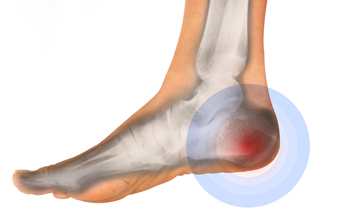
Morning heel pain can have several underlying causes. One of the most common culprits is plantar fasciitis, a condition in which the broad band of tissue that runs along the bottom of the foot becomes inflamed. This results in sharp or stabbing pain in the heel that tends to be most intense in the morning. Another source is Achilles tendonitis, which is the inflammation of the tendon that connects the calf muscles to the heel bone. It can be caused by tight calf muscles or overuse. Morning heel pain has also been linked to rheumatoid arthritis, an autoimmune condition that causes Inflammation in the foot joints and results in stiffness and discomfort, especially after periods of rest. A stress fracture in the heel bone may also be responsible for morning discomfort. These hairline fractures can cause localized pain that becomes more noticeable when you first put weight on your feet in the morning. Lastly, aging can contribute to morning heel pain, as the muscles, tendons, and ligaments lose some of their flexibility and resilience. If you're experiencing morning heel pain, it's suggested that you make an appointment with a podiatrist who can accurately diagnose the cause and recommend an appropriate treatment plan.
Many people suffer from bouts of heel pain. For more information, contact Philip K. Schrumpf, DPM of Active Feet Clinic. Our doctor can provide the care you need to keep you pain-free and on your feet.
Causes of Heel Pain
Heel pain is often associated with plantar fasciitis. The plantar fascia is a band of tissues that extends along the bottom of the foot. A rip or tear in this ligament can cause inflammation of the tissue.
Achilles tendonitis is another cause of heel pain. Inflammation of the Achilles tendon will cause pain from fractures and muscle tearing. Lack of flexibility is also another symptom.
Heel spurs are another cause of pain. When the tissues of the plantar fascia undergo a great deal of stress, it can lead to ligament separation from the heel bone, causing heel spurs.
Why Might Heel Pain Occur?
- Wearing ill-fitting shoes
- Wearing non-supportive shoes
- Weight change
- Excessive running
Treatments
Heel pain should be treated as soon as possible for immediate results. Keeping your feet in a stress-free environment will help. If you suffer from Achilles tendonitis or plantar fasciitis, applying ice will reduce the swelling. Stretching before an exercise like running will help the muscles. Using all these tips will help make heel pain a condition of the past.
If you have any questions please contact our office located in Missoula, MT . We offer the newest diagnostic and treatment technologies for all your foot and ankle needs.
Symptoms of a Broken Ankle
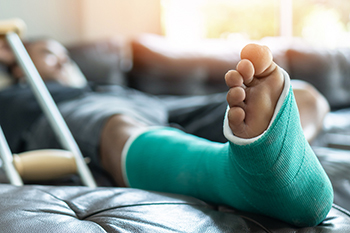
A broken ankle is a painful and potentially serious injury that requires immediate attention. One of the most apparent signs of a broken ankle is severe pain, often accompanied by swelling and bruising around the affected area. You may find it challenging or impossible to bear weight on the injured ankle. Deformity is another clear indicator of a broken ankle. If the ankle appears misaligned or if the bone has broken through the skin, it is a clear sign of a fracture. Reduced range of motion in the ankle joint is another symptom. Additionally, attempting to move the ankle may cause further pain. Numbness or tingling in the foot or toes can also occur, indicating nerve involvement. If you suspect a broken ankle, seek immediate medical attention. An accurate diagnosis, often involving X-rays, is essential. Treatment options include casting, bracing, or surgery. If you have broken your ankle, it is suggested that you confer with a podiatrist who can accurately diagnose and treat this condition.
Broken ankles need immediate treatment. If you are seeking treatment, contact Philip K. Schrumpf, DPM from Active Feet Clinic. Our doctor can provide the care you need to keep you pain-free and on your feet.
Broken Ankles
A broken ankle is experienced when a person fractures their tibia or fibula in the lower leg and ankle area. Both of these bones are attached at the bottom of the leg and combine to form what we know to be our ankle.
When a physician is referring to a break of the ankle, he or she is usually referring to a break in the area where the tibia and fibula are joined to create our ankle joint. Ankles are more prone to fractures because the ankle is an area that suffers a lot of pressure and stress. There are some obvious signs when a person experiences a fractured ankle, and the following symptoms may be present.
Symptoms of a Fractured Ankle
- Excessive pain when the area is touched or when any pressure is placed on the ankle
- Swelling around the area
- Bruising of the area
- Area appears to be deformed
If you suspect an ankle fracture, it is recommended to seek treatment as soon as possible. The sooner you have your podiatrist diagnose the fracture, the quicker you’ll be on the way towards recovery.
If you have any questions, please feel free to contact our office located in Missoula, MT . We offer the newest diagnostic and treatment technologies for all your foot care needs.
Reminder: When Was the Last Time...?
Blog Archives
- August 2024
- July 2024
- June 2024
- May 2024
- April 2024
- March 2024
- February 2024
- January 2024
- December 2023
- November 2023
- October 2023
- September 2023
- August 2023
- July 2023
- June 2023
- May 2023
- April 2023
- March 2023
- February 2023
- January 2023
- December 2022
- November 2022
- October 2022
- September 2022
- August 2022
- July 2022
- June 2022
- May 2022
- April 2022
- March 2022
- February 2022
- January 2022
- December 2021
- November 2021
- October 2021
- September 2021
- August 2021
- July 2021
- June 2021
- May 2021
- April 2021
- March 2021
- February 2021
- January 2021
- December 2020
- November 2020
- October 2020
- September 2020
- August 2020
- July 2020
- June 2020
- May 2020
- April 2020
- March 2020
- February 2020
- January 2020
- December 2019
- November 2019
- October 2019
- September 2019
- August 2019
- July 2019
- June 2019
- May 2019
- April 2019
- March 2019

